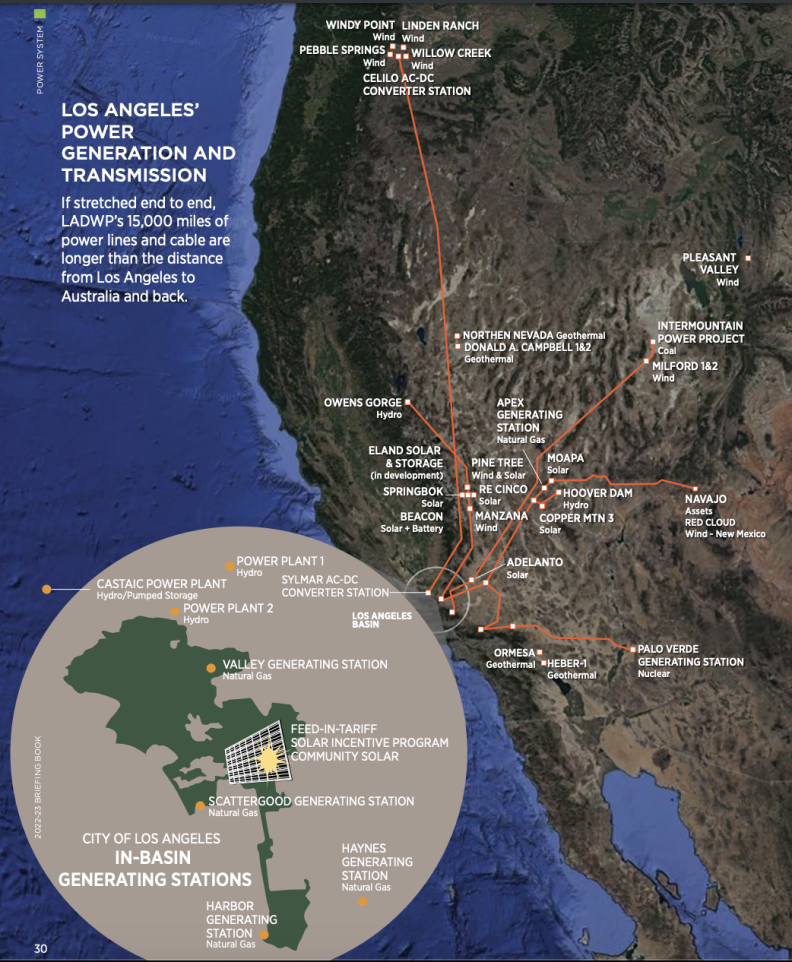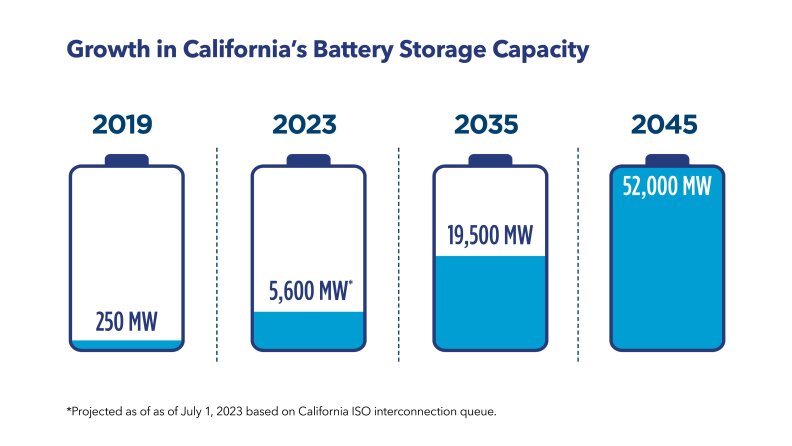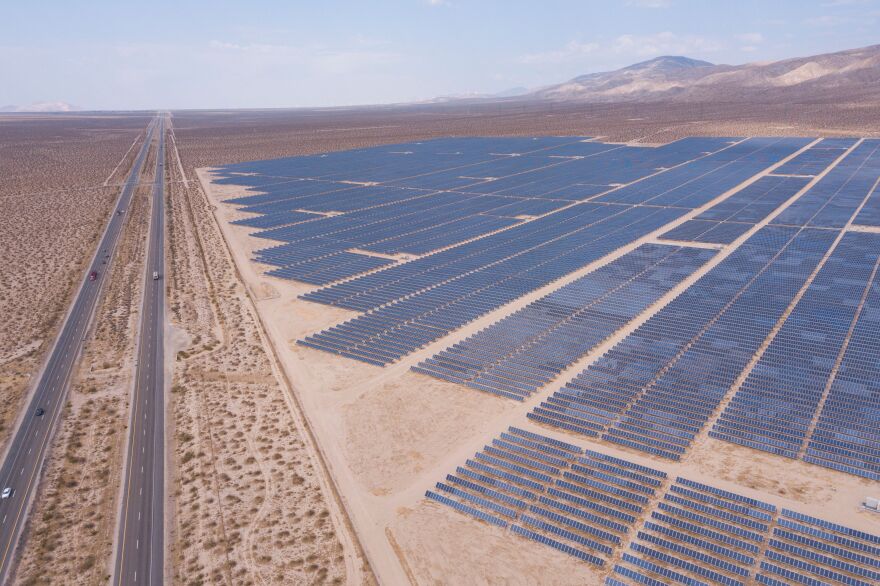When it’s really hot, we use way more electricity — cranking up fans, air conditioning, maybe taking more than a few cold showers.
And increasingly severe heat waves, fire and weather are already stressing our electric power grid to the max.
On top of that, California has set ambitious goals to electrify our homes, businesses and cars.
The science is clear that burning fossil fuels such as gas and coal, largely to generate electricity, is the single-largest cause of our rapidly heating planet.
The idea is if we electrify everything and generate all of our electricity from solar, wind and other renewable power sources, we’ll dramatically reduce planet-heating pollution.
But — how will the grid keep up with worsening heat and even more electrification? This guide digs into that question. But first, let’s understand some basics.
What is the power grid?
The power grid is made up of power plants that generate electricity. They are connected via high-voltage transmission lines that go through transformers and substations to lower that voltage. That way, the electricity can safely pass through local power lines that plug into our homes and businesses. Watch the video below for a quick explainer.
The California Independent Systems Operator, or CAISO, is the nonprofit state agency responsible for maintaining a balanced grid. They send flex alerts — those emergency texts asking us to conserve energy that we’re now all too familiar with.
Where does our electricity come from?
-
It's gonna be Yankees v the Boys in Blue
-
Nonprofit's launching fundraiser to keep it afloat
-
USC study documents what residents want from trees
In short, like where your water comes from, it depends on where you live. But in general in California, electricity is primarily generated by gas-fired power plants, solar and wind power, and hydropower from water in reservoirs. Coal power is on its way out, but recent droughts have led to an increase in gas-fired and coal-fired electricity — the most polluting form of electricity generation. (There’s only one coal plant left in California and it’s in San Bernardino County.)
California also imports more electricity than any other state, often receiving as much as a third of its energy from other Western states. That connectivity between state power grids is one reason why we didn’t have power outages during the 2022 record 10-day heat wave in early September. A state bill is being considered that would expand that regional power sharing system.
-
Investor-owned, for-profit utility companies such as Southern California Edison (SCE) purchase power on the energy market then send it to us via the system of power lines and substations. SCE doesn’t make more money the more electricity you use — rather, they pass on the cost of the energy itself to us (and that cost can fluctuate quite a bit since it’s tied to global energy markets, which are driven by gas prices), and make their profit by maintaining and building the transmission lines and substations needed to distribute that electricity.
-
These utility companies are regulated by California. The state sets the rules that are pushing the utilities to incentivize efforts to source cleaner energy and improve energy efficiency in general, something SCE has long lobbied against.
-
Then there are nonprofit electricity providers, such as the Clean Power Alliance, which are expanding in California. These nonprofits can allow local governments to offer more clean energy choices for their customers that may not be offered by the traditional investor-owned utility.

California already has a cleaner grid than most states. In 2022, renewable resources, mostly hydropower and solar, accounted for about half of the electricity California generated. Gas fueled most of the rest, according to the International Energy Agency.
But each city and county in the state has its own cocktail of energy sources, so check with your local power provider to understand where your energy comes from. For example, in 2021, Los Angeles got 35% of its power from renewable energy and 19% from coal. Pasadena, however, generated about 33% of its power from renewables and more than 47% from coal. That's why local efforts to shift to clean energy can make a big impact on the grid as a whole.
Electricity demand today and projections for the future
In early September 2022, California hit an all-time high for power demand during an long-lasting, record heat wave — you may remember getting that emergency text begging us all to turn down our A/C and conserve energy in whatever way safe and possible.

The ongoing, skyrocketing heat had Southern Californians using unprecedented amounts of energy. The grid was at risk of not having enough energy to support all that demand. Ultimately energy demand hit 52,061 megawatts, 69 megawatts above the 2006 record, set during a 10-day July heat wave.
But thanks to the public actually responding to that alert and a dramatic increase in solar battery storage, planned rolling power outages were avoided — unlike in 2020.
Now, not only are worsening heat seasons and wildfire risk increasing the demand for energy, but energy needs are increasing as the state moves to electrify and shift to renewable energy as quickly as possible.
-
California already has more than a million electric or hybrid cars on the road — the state expects that number to jump to more than 12 million by 2035. There’s also the 1.8 million mostly diesel big rig trucks operating every day in the state — the state projects about half of those trucks will be electric or hydrogen-powered by 2035.
-
Then there are all of our buildings, which run on both electricity and gas. Last year, L.A. became the 69th and largest city in the state to require all new buildings to be all-electric. The next, more difficult, step is retrofitting existing buildings to be powered only by electricity.
With increasing heat waves and all that electrification, California expects it’ll need to nearly triple the amount of electricity it generates. To do that, the state will need to quadruple its solar and wind power, which means — in just the next 13 years — efforts to build large-scale wind and solar power and battery storage will need to speed up by a whopping 700%.

The state has added a significant amount of battery storage in just the last three years — from 250 megawatts in 2020 to 5,600 megawatts as of July this year, which can provide enough electricity to power 4.2 million homes for up to four hours before the batteries need to be recharged.
That increase in battery storage, plus the boost to hydropower with our wet winter, has state officials cautiously optimistic that we can avoid rolling power outages this summer — barring any extreme heat and wildfire disasters converging at the same time, which is always possible and will become increasingly possible if the world doesn’t dramatically slash carbon emissions in the next seven years.
But because we still don’t have enough battery storage to use all our solar power when the sun goes down, the state has decided to keep some gas-fired power plants running, which increases local pollution and adds to our greenhouse gas emissions, which are causing the issue in the first place. The balance between keeping the lights on and reducing emissions is a difficult line to walk.

But it’s not just about replacing the old grid with huge fields of renewables, or gas cars and furnaces with electric ones. There are more creative — and more environmentally friendly ways to “decarbonize” our world, from investing in local energy sources to improving public transportation. These efforts can also relieve stress on the broader grid. For example, local or “distributed” energy sources (as they’re officially called) such as rooftop solar, community solar, clean microgrids, and even using electric vehicles to support the grid are all potential ways to help keep communities’ water and power flowing during disasters — and even reduce utility bills.
In the long-term, more local and national clean energy generation could help ease wildly fluctuating energy prices tied to global gas markets, as well as allow the U.S. to become energy independent, the benefits of which the war in Ukraine has most recently made clear.
Then there’s also the cheapest and least sexy option: energy conservation. Similar to water conservation, efforts to conserve more energy through more efficient appliances and better insulation can have a huge impact.
What does all this mean for utility bills?
Unless you have rooftop solar panels, you’ve probably only seen your gas and electric bills go up. That’s largely because what goes into our bill isn’t just about the amount of energy we use.
A lot of what’s in our electric bills is actually for fixed costs, like hardening the grid against wildfires or subsidizing energy efficiency programs, said Severin Borenstein, an energy policy professor at UC Berkeley. No matter our income, those fixed costs are the same for everyone.
“As a result, we're essentially imposing a tax on the price of electricity,” said Borenstein. “When we do that, what our research has found, is it hits poor people much more than it hits wealthy. Compared to sales tax, compared even to a gas tax, and compared to income tax, it's just massively more regressive.”
For more of us to benefit from cheaper renewable energy, Borenstein said rate structures need an overhaul and the state needs to cover bigger slices of the fixed costs attached to our bills. To address this, California is considering an income-based rate system, which would be the nation’s first.
Borenstein said a well-structured, income-based rate would ease costs for low-income customers while giving households that want to invest in electrification more bang for their buck. But opponents worry it could hurt middle-income households and that the issue should be resolved with tax code changes instead. (You can learn more about what the proposal means here.)
But overall, this early in the transition, our bills are on an upward trend.
“I hate to say it, but I think the reality in the next decade or two is just higher utility prices due to these combinations of factors,” said UCLA urban planning professor Greg Pierce. “Once we've fully transitioned, I do think there's potential for quite a bit of savings compared to what people are used to paying and what we would be paying if we just stayed on natural gas.”
That’s because utility-scale solar and wind power is already cheaper than gas prices and increased efforts around local, distributed sources of power and battery storage could help renters and homeowners save significantly — though these projects can be more expensive to build up front. Also, newer electric appliances such as heat pumps use far less energy than older models of air conditioning or gas furnaces, for example.
When it comes to our ever-rising bills, Pierce said in addition to rate restructuring, it’s essential cities take action to better support communities through the transition by:
- Providing robust utility discount programs (LADWP has water and power rebates for low-income and senior customers, but Pierce said these programs could expand).
- Ending water and power shutoffs for nonpayment (which LADWP just agreed to do, though details still need to be worked out).
- Targeting clean energy programs towards populations that are most impacted by fossil fuels. Many of these efforts, such as community solar, have lagged in California.
These are more short-term answers, but longer-term making solar-plus-battery storage more accessible to low- and middle-income households could lead to big savings. And, it’s kind of obvious, but eventually all our gas bills will be absorbed into our electricity bills. That could mean a larger-than-expected water and power bill for renters and homeowners.
“For high-income households, it's probably actually a convenience,” said Pierce. “But for low-income households, any big, rare bill is worse than small, frequent bills.”
Still, most of us will be dealing with higher costs for the foreseeable future.
“I think everyone has to be prepared for or is going to face sort of higher bills,” Pierce said. “The transition costs a lot.”
But focusing purely on bills can make us forget all the long-term benefits of this transition, such as good job opportunities and an overall healthier living environment, said Tiffany Wong, a policy expert at grassroots group Strategic Concepts in Organizing and Policy Education, or SCOPE-LA, which advocates for environmental and economic justice in south L.A.
“It's not just about how we reduce greenhouse gas emissions, but it's really this holistic view of public health, our environment, our housing,” Wong said. “But where we are really now is, how do we get affordable rates?”










